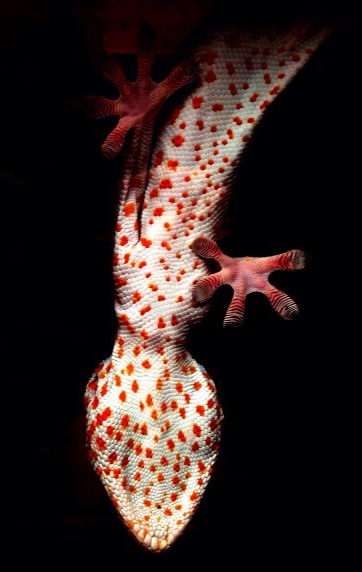Is it possible to take the natural heating and cooling mechanisms from the human body and recreate it synthetically to regulate heating and cooling in the form of textile insulation? Many scientists and garment insulation experts not only agree it’s possible but have already developed reliable solutions.
Biomimicry is a discipline that learns from the genius and orchestration of the natural world and attempts to design and recreate in our daily lives. Although this is a newer area of study, this type of monkey-see-monkey-do learning style dates back to the beginning of human history.

The wingspan of birds was used to develop the airplane. The way in which plant burr’s stick to dog fur inspired the invention of Velcro. State of the art climbing equipment and medical devices are the result of studying the nanoscale structures on the feet of geckos which allows for gravity-defying feats like climbing vertical surfaces and hanging upside down. More recently, the way the tip of mosquito’s mouth moves to penetrate the skin is being studied to in healthcare community to improve needles that ultimately generate zero pain.
In spite of the elements, our technological advancements have given us the opportunity to travel across the globe in different fashions – from hiking Mt Everest, to deep sea diving, or walking the streets of New York City, we’ve managed to develop the proper attire and gear to suit our needs. What solutions are out there?
Battery Technology for Thermal Insulation…
One of the latest approaches to garment insulation are cordless heating systems wherein most cases involve a rechargeable battery as the source of power. Similar to a rechargeable battery pack for wireless drill, the battery used for a jacket plugs into your jacket, where electrical currents move through wires that are embedded in the coat. As a consequence, heat is generated. Leading the frontier in the rechargeable category are brands such as Milwaukee, Bosch, Dewalt, Makita, and Ororo. In an October 2019 article titled 7 Best Heated Jackets, each brand is rated by www.outsidepursuits.com.
Generating heat via battery doesn’t come without it’s negatives. The risk of fire, burning, or even electrocution is still something to consider. Additionally, the need for a battery pack and conducive wiring adds additional weight to your jacket. The final negative worth considering is the source of heat is limited to a power source that will inevitably run out.
Self-Reliant Thermal Insulation…
Experts in thermal insulation industry, Thermore is a based out of Milan, Italy and has revolutionized thermal technology. Independent of an artificial power source, Thermore has created Thermal Booster, a self-regulating insulation that adapts to changing weather conditions. Using a specific shape-memory polymer, combined with a proprietary treatment produces insulation that reacts directly to varying temperatures within seconds. Similar to the function of our skin, (the human body’s largest organ), Thermal Booster operates in a similar manner to the environment – when temperatures decrease, the pores of our skin close and our body hair rises, forming goosebumps, trapping air and retains warmth. And when the temperature rises, our pores open acting as a cooling system. Thermal Booster fibers function in a similar way, opening during warmer temperatures, and close during cooler temperatures.
The positive to this type of technology is that it’s self-reliant. Not requiring battery packs, it remains lightweight and can endure changing climates, indoors or outdoors.
Independent studies concluded that when temperatures decrease, the thermal value of Thermal Booster increases over 20% warmer. Check out a video to learn more.
When deciding on your next jacket, there are many variables to consider, however, I would have to take nature’s side and seek the most self-reliant solutions.



